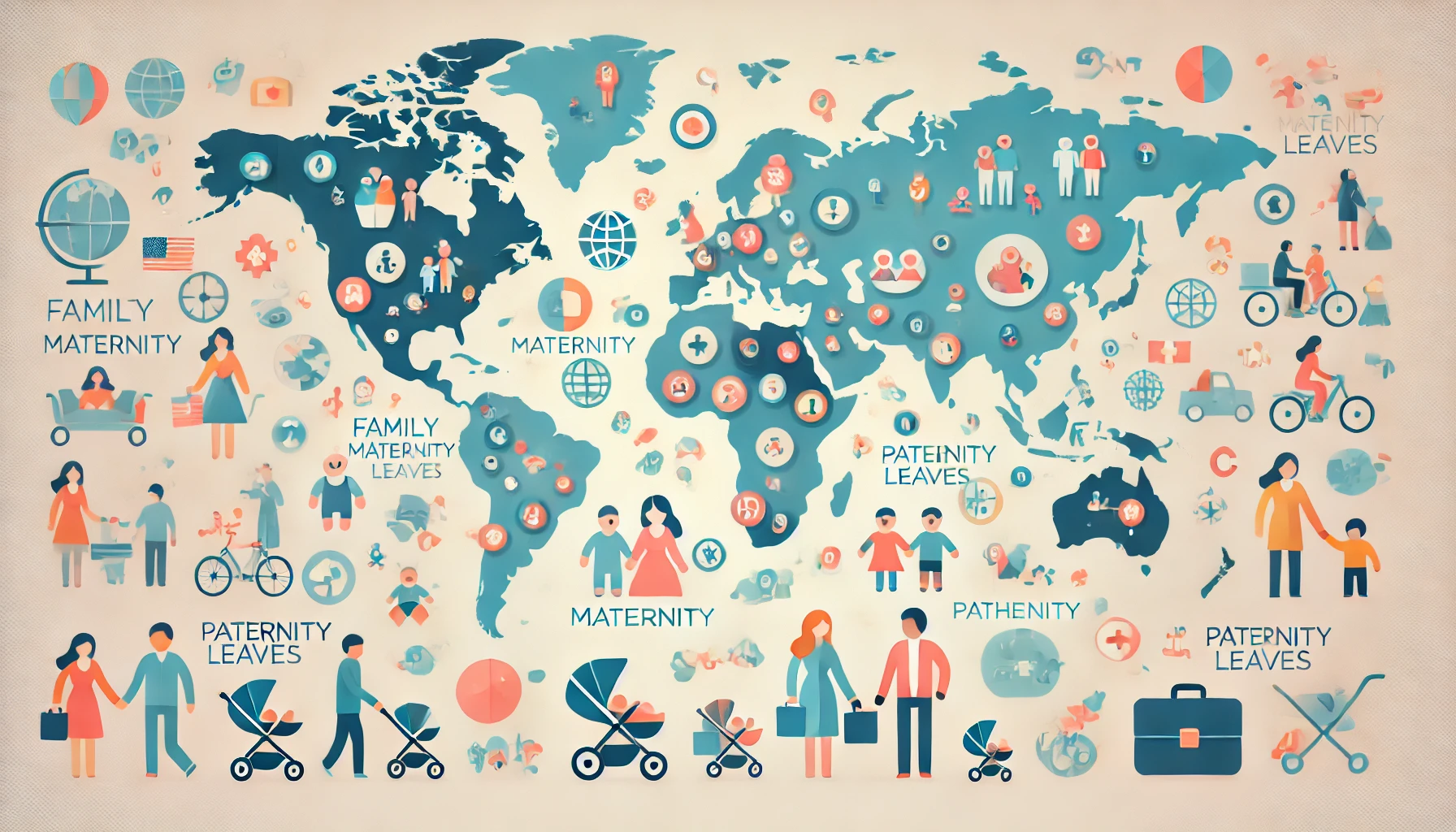Table of Contents
ToggleThe landscape of family, maternity, and paternity leaves varies significantly across the globe, reflecting diverse cultural, economic, and policy priorities. These leaves are crucial for supporting parents during significant life events, ensuring work-life balance, and promoting the well-being of families. This article delves into the global practices surrounding family, maternity, and paternity leaves, highlighting key differences and emerging trends.
Family Leave Policies
Family leave encompasses time off work for a variety of family-related reasons, including the birth or adoption of a child, caregiving for a sick family member, or dealing with a family emergency. Policies differ widely in terms of duration, compensation, and eligibility.
North America
- United States: The Family and Medical Leave Act (FMLA) provides up to 12 weeks of unpaid leave for eligible employees. While this is a federal mandate, some states offer additional paid leave benefits.
- Canada: Offers a more generous approach, with up to 63 weeks of leave for new parents. This includes 15 weeks of maternity leave and 40 weeks of parental leave, which can be shared between parents. Benefits are paid through the Employment Insurance system.
Europe
Europe is known for its robust family leave policies, often providing lengthy and well-compensated leaves.
- Sweden: Parents are entitled to 480 days of paid parental leave, which can be shared between both parents. The leave is paid at approximately 80% of the parent’s salary for the first 390 days.
- Germany: Parents can take up to 14 months of parental leave, with a parental allowance covering up to 67% of the parent’s income, capped at €1,800 per month.
Asia
Family leave policies in Asia show a mix of comprehensive state-supported programs and minimal provisions, reflecting the region’s economic diversity.
- Japan: Offers 14 weeks of maternity leave at 60% of the mother’s salary. Additionally, either parent can take up to one year of child care leave.
- India: Provides 26 weeks of paid maternity leave, but paternity leave policies are not well-established, with most private sectors offering minimal leave.
Maternity Leave
Maternity leave is a fundamental right for working mothers, allowing them to recover from childbirth and bond with their newborns. The duration and compensation of maternity leave vary significantly.
Africa
Maternity leave policies in Africa range from generous to basic, influenced by each country’s economic situation.
- South Africa: Offers 4 months of unpaid maternity leave, with the option to claim a portion of their salary from the Unemployment Insurance Fund.
- Nigeria: Provides 12 weeks of maternity leave at 50% of the mother’s salary.
Middle East
Maternity leave in the Middle East is generally shorter, but there are efforts to improve policies in some countries.
- United Arab Emirates: Offers 45 days of fully paid maternity leave, followed by an additional 45 days at half pay.
- Saudi Arabia: Provides 10 weeks of paid maternity leave at full salary.
Paternity Leave
Paternity leave allows fathers to take time off work to care for their newborns and support their partners. The length and pay of paternity leave can vary.
Latin America
Countries in Latin America are increasingly recognizing the importance of paternity leave.
- Chile: Fathers are entitled to 5 days of paid paternity leave, plus an option to share part of the mother’s maternity leave.
- Brazil: Provides 5 days of paid paternity leave, with some companies offering extended leave through corporate policies.
Oceania
Australia and New Zealand have progressive paternity leave policies.
- Australia: Offers 2 weeks of paid paternity leave under the Dad and Partner Pay scheme, paid at the national minimum wage.
- New Zealand: Provides 2 weeks of unpaid paternity leave, with the possibility of extended leave depending on the mother’s entitlement.
Emerging Trends and Challenges
Globally, there is a growing recognition of the need for equitable and supportive family leave policies. Some emerging trends include:
- Gender-Neutral Parental Leave: More countries and companies are adopting gender-neutral parental leave policies, allowing either parent to take leave and promoting shared caregiving responsibilities.
- Flexible Leave Arrangements: Flexible leave options, including part-time leave and remote work arrangements, are becoming more common to accommodate the diverse needs of modern families.
- Corporate Initiatives: Many multinational companies are implementing generous family leave policies to attract and retain talent, setting a standard that often exceeds local legal requirements.
Despite these positive trends, challenges remain. In many countries, especially those with developing economies, access to paid family leave is limited, and cultural norms can discourage fathers from taking paternity leave. Additionally, the gig economy and freelance work pose new challenges for ensuring all workers have access to family leave benefits.
